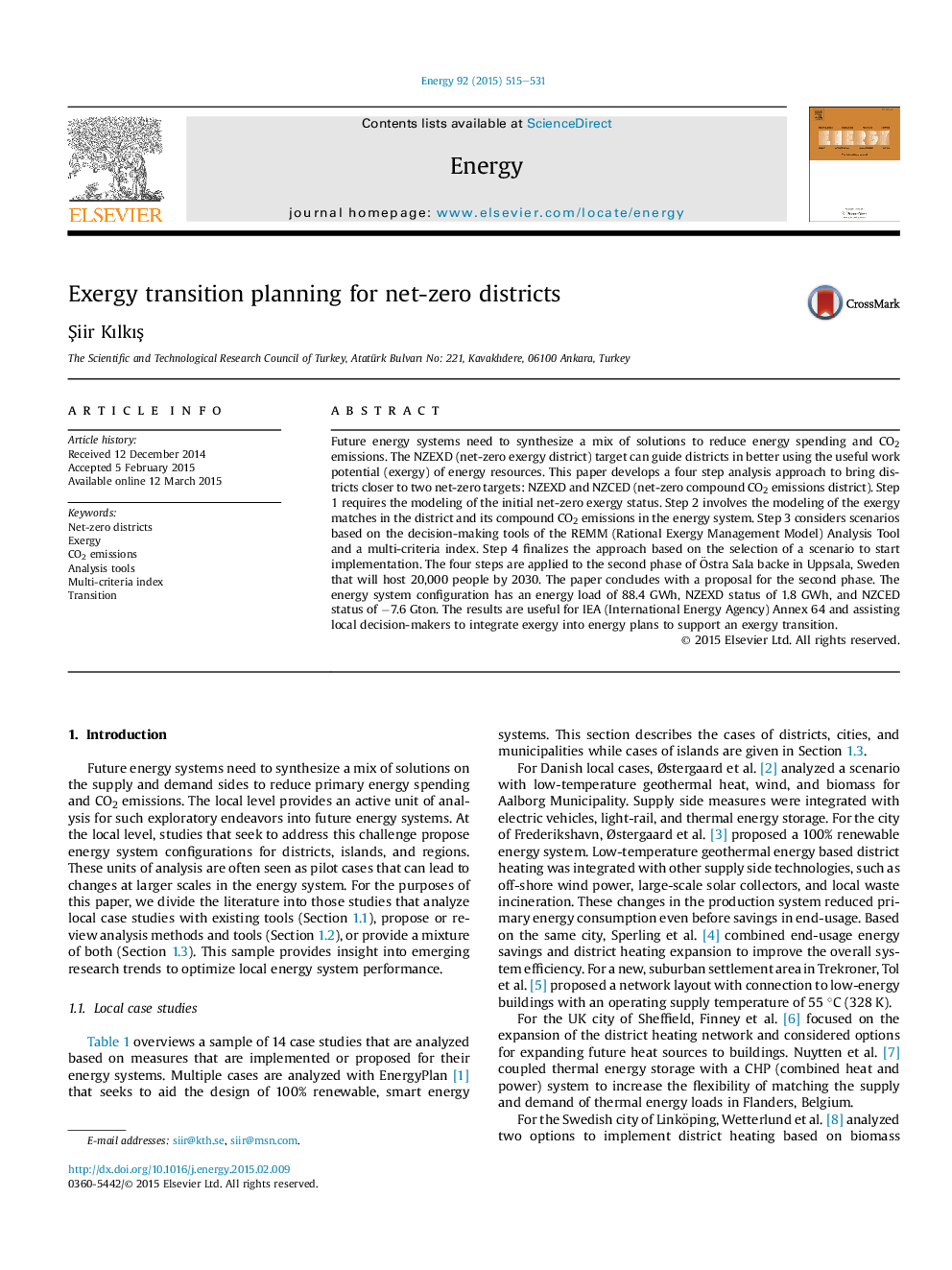| Article ID | Journal | Published Year | Pages | File Type |
|---|---|---|---|---|
| 1731695 | Energy | 2015 | 17 Pages |
•We develop an analysis approach to bring districts closer to net-zero targets.•We apply the four steps of analysis to the second phase of Östra Sala backe.•A NZCED (net-zero compound CO2 emissions district) target is established.•REMM Analysis Tool v2 is developed and applied to the second phase.•NZEXD (net-zero exergy district ) status is 1.8 GWh in the proposed scenario.
Future energy systems need to synthesize a mix of solutions to reduce energy spending and CO2 emissions. The NZEXD (net-zero exergy district) target can guide districts in better using the useful work potential (exergy) of energy resources. This paper develops a four step analysis approach to bring districts closer to two net-zero targets: NZEXD and NZCED (net-zero compound CO2 emissions district). Step 1 requires the modeling of the initial net-zero exergy status. Step 2 involves the modeling of the exergy matches in the district and its compound CO2 emissions in the energy system. Step 3 considers scenarios based on the decision-making tools of the REMM (Rational Exergy Management Model) Analysis Tool and a multi-criteria index. Step 4 finalizes the approach based on the selection of a scenario to start implementation. The four steps are applied to the second phase of Östra Sala backe in Uppsala, Sweden that will host 20,000 people by 2030. The paper concludes with a proposal for the second phase. The energy system configuration has an energy load of 88.4 GWh, NZEXD status of 1.8 GWh, and NZCED status of −7.6 Gton. The results are useful for IEA (International Energy Agency) Annex 64 and assisting local decision-makers to integrate exergy into energy plans to support an exergy transition.
